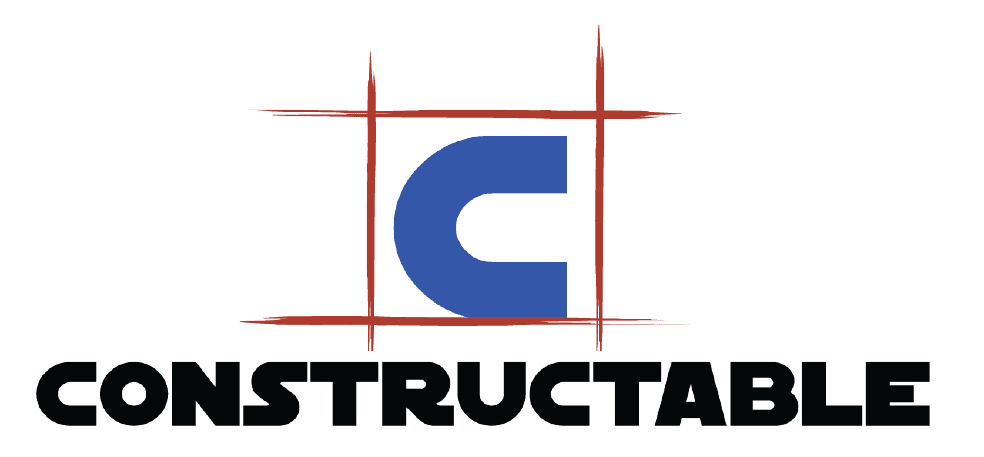
The Challenge of Business in the Digital Age
Never before in the history of mankind has business been so fast-paced, has a customer been so empowered, and success in business so complex. This is not hyperbole; it is fact.
Not only do companies face competition on pricing, schedule, and capabilities, but they now have to contend with a very powerful customer base who knows all those things about your competitors at the touch of a button. How do you, as the business owner/executive, outmaneuver the competition and sell to and keep the trust of your customers, all at the same time?
Lean into the challenge of business in the digital age.
CHALLENGE 1: Empowered customers
Empowerment of customers is a very good thing. Look no further than the mother who checks the reviews on the newly-minted child safety whatchamacallit, or the never-before-seen special feature on your brand new car. It is only a problem to have empowered customers if you lose the bidding job. But if you build a great brand that can support empowered customers, you’ll be the one to win each time.
The power of a customer is the knowledge they wield. The more they know about you, your competitors, the harder it is to pull the wool over their eyes or take advantage of them. And this is a good thing. So many unscrupulous businesspeople out there count on a sheep-like consumer base that walks into things blindly. But it is high time we started treating customers like adults with needs, desires, and–now more than ever–tools to use in negotiation.
Now your customers come to the table knowing more than ever. Smart business people will take that as a good thing and build upon the mutual knowledge to move the deal forward faster. The learning curve is much smaller now that the customer has invested and researched you and your business. It provides common ground on which to build. And if they came to your negotiating table, it means that they have not yet disqualified you. That is the very first step to a good deal, disqualifying the ones who do not deserve to sit at the table. Congratulations, you’re past step one.
CHALLENGE 2: Reviews can make or break you
In a digital age of business, you can get reviews on nearly any company and anyone simply by typing in a few key search terms. What a blessing if you’re good at what you do and (conversely) what a curse if you are not. Nothing will kill a customer’s trust in your business faster than bad reviews.
Sadly, most people only post reviews to complain. How many people do you know that proactively go out of their way to post good things about you or your business? It is the bad experience that often fuels the passion to complain online, behind a keyboard layer of security and anonymity.
So, knowing that most reviews are critical, how can you beat them? Deliver time and again.
The better you are; the better an experience people have with you; the more positive reviews you’ll get. This might be a slow process, but it is intended this way. You want to present a history of being counted on, of producing efficiently, of being effective for your customers. What way is there to overcome a bad review than to get better? Although the unfair ones still count against you, they are doing what they are intended to do if you get better and provide the service that everyone needs you to.
“We’re building dreams here.” –Jared Hellums, Principal, Constructable
CHALLENGE 3: Competition
Paired closely with the reviews you experience is the challenge of fast-paced competition. Now any customer can learn about your competitors with the touch of a button.
What sets you apart from them? How and why are you any better than them?
Is it your customer service? Is it your speed? Your expertise? All of the above? How can you get that information across to them quickly–while you have their attention–and skillfully–so you appear in command and the expert of your field?
This is where customer reviews, testimonials, and lifetime customers are vital. If you can get your customers to sing your praises–through constant delivery and great customer service–they will be what pushes you over the edge. Perhaps it’s time to contact your best customers and recruit some fantastic testimonials from them?
“At Constructable customer satisfaction is not a pipe dream, it’s the reality.” –Jared Hellums, Principal, Constructable
CHALLENGE 4: Long sales cycles
Whether you are selling a $5 dollar item to a millions of dollars contract, sales cycles have lengthened significantly. This is entirely a function of a more empowered customer who needs to be convinced at every point of the process. There is now a cycle of aware, informed, in depth, dispelled (myths about your company being too good to be true), known, tested, convinced, sold, and returning customer that you have to ride out through the entire length of the journey.
- Aware: Does the customer even know about you at all? It seems silly to even say, but the customer has to have some awareness of you to do business.
- Informed: Does the customer know what you do? The customer has to move to a place of knowing what you offer.
- In depth: Does the customer know what is unique about what you do? The customer has to realize just why they ought to pick you over anyone else.
- Dispelled: Does the customer still believe false beliefs about you (“They seem too good to be true.” “No one can offer that kind of service or price.”)? Have you convinced them that you really can do what you promise? This point often involves the discovery of why you are better than the competition and discovery of positive reviews of your company or product.
- Known: The customer now becomes a fan and can even spread your name because of knowledge of who you are and belief in what you purport to do.
- Tested: Often it is best to give a free trial so the customer can test the waters and experience what it is like for you to deliver. No one buys significant purchases without a true test or some contractual obligation. Better to opt for the free test than to be contractually bound too quickly. (In larger purchases, you are actually vetting your customer too).
- Convinced: At this point the customer now trusts you enough to make a sizable investment of time, resources, even money. The offer just has to be negotiated and finalized.
- Sold: The trigger has been pulled by the customer and you are ready to start your engagement.
- Returning: The customer has been convinced by your previous history and work–all of this leading to a golden opportunity of continual, mutually-beneficial partnership–to become a consistent consumer of your goods or services.
Endure all of this and you reach the promised land. Fail in any one of these steps and you, likely, will lose the job altogether, much less the golden opportunity of a returning customer.
The long sales cycle shows how customers are no longer satisfied to give money to someone or something they have no knowledge of. The information age, paired with the fantastically fast growth of the digital age, have resulted in a “provide me some value and prove to me that I can trust you with more than just my own information” type of customer.
Now you have to provide value (without giving away the farm) so that they have a real taste of who you are and what you know. Are you ready to ride out this long sales cycle in pursuit of a closed deal? Can you float the necessary capital to wait out the patient-and-empowered customer?
CHALLENGE 5: Being strung along
In the vein of floating capital, you can go through an entire sales cycle only to realize that the customer has strung you along, doing due diligence or simply checking a checkbox in their company’s policy manual to find additional quotes. The empowered customer can string you along without you seeing a measurable difference between a true sale and a “kick the tires only” engagement.
An empowered customer has all rights to do this stringing along. Businesses must be prepared to weather a few of these storms before the true sale. Yet, it is not all bad news in being strung along. That customer, though not sold on the previous job, will likely remember your responsiveness, your capabilities, your treatment of them the next time they need a project. All is not lost. Indeed you’ve build an important connection for future sales if you can keep your head, not get angry at the “tire-kicking-only,” and stay in business long enough for them to return to you.
All of these considerations are necessary to work through in this challenge of business in the digital age. All of this with the final goal of winning lifetime customers.
THE PRIZE: Lean into the challenge of the digital age to pursue longterm wins to gain lifetime customers.
It’s the long game that matters. Better a fight for credibility, floating capital, and enduring a long sales cycle with the greater reward at the end than to shortchange yourself by shortcutting the process.
We are building lifetime customers here. And that takes patience and time.k
A few quick tips to finding lifetime customers:
- Endure the long sales cycle.
- Play the “kick the tires only” game to get that second job.
- Happily feed the empowered customer the information they require.
- Keep the next job in mind when working on your current one.
Keeping the next job in mind is granting vouchers, gift cards, rewards programs, special pricing, special terms, and whatever else can be used to prepare yourself and your customer for the next job together. It’s all about winning together so that you have a business partnership here that is evergreen: your jobs being done on budget and on time, our company doing great business with a partner.
The digital age has presented a challenge for any business ready to accept. If you can not only accept but applaud the empowered customer, you just might be ready for the big leagues; and your patient planning and measured risks will finally pay off.
Here at Constructable we want a longterm relationship with all of our customers. We want to be your recurring resource for any future needs that arise. With a business partner like Constructable, we can build your ideas together into reality. Our design build model helps facilitate that as it empowers the customer to be both in control and free from daily encumbrances at the same time. We think you will like the additional empowerment that design build brings and the business partnership that Constructable brings. Check out our project gallery at constructable.pro.
ACTION POINT: (With each article we will present one action point as a measurable takeaway for any owner or executive sponsor.)
Build a brand, not do a job.
The digital age challenge, especially the empowered customer, has spawned the need of a brand-based thinking so that customers can feel the greatness of your company from end to end. To be able to present this kind of experience it is critical that you not think of jobs as mere jobs, but as opportunities for the customer to interact with your brand.
Be it great customer service, quick delivery and completion, constant transparency, whatever your unique proposition is, the customer needs to experience your brand throughout the process of interaction with you. From the entry-level employee to the CEO, everyone has to be focused on a brand-based interaction demonstrating the greatness of your team so as to build lifetime customers. It takes thinking through your business processes to help your team understand just what that means for their daily operations. But if you can build a brand, you can build a lifetime customer.





